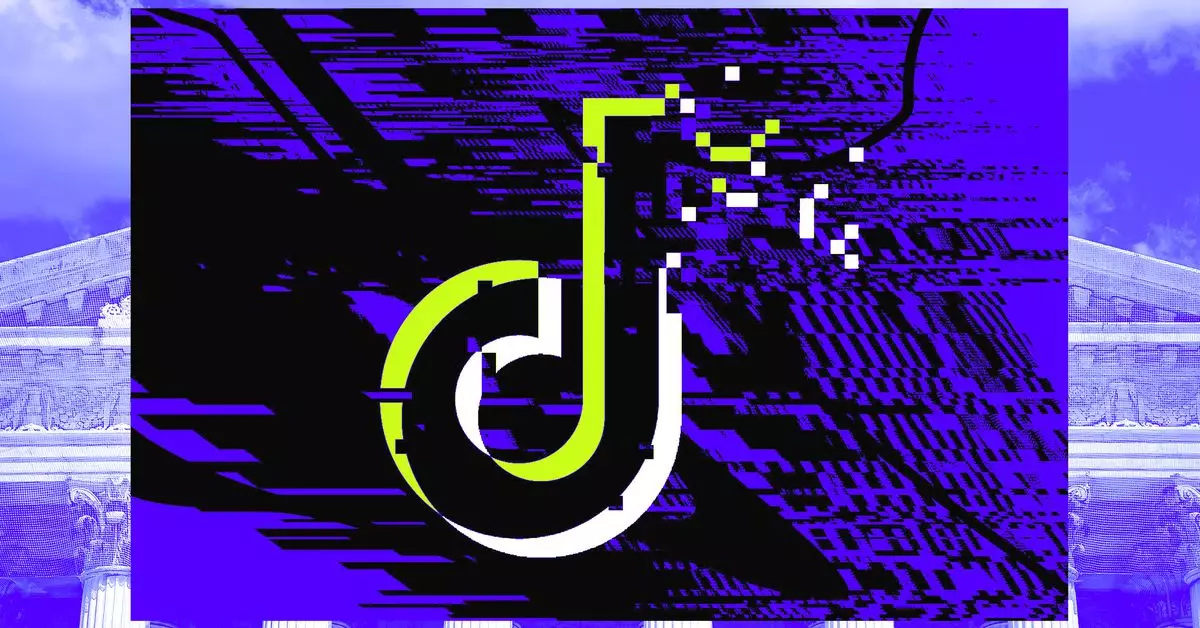In a surprising turn of events, President Donald Trump has issued an executive order that effectively complicates the legal landscape surrounding TikTok, the popular social media platform owned by the Chinese company ByteDance. This move, coming on his first day back in the office, has pivotal implications not only for TikTok but also for American tech giants that may find themselves navigating a treacherous legal jurisdiction. Critics and legal experts are puzzled by the method and legality of Trump’s actions, raising questions about their consequences and the broader implications for U.S.-China relations and technology governance.
The crux of Trump’s executive order lies in its directive to the Department of Justice (DoJ), which is instructed to refrain from enforcing a law that would compel TikTok to divest from its Chinese parent company, effectively lifting the immediate threat of a ban. Interestingly, this order appears to grant companies like Apple and Google a temporary reprieve from the punitive measures that might ensue if they attempted to continue their collaborative efforts with TikTok. The Attorney General is mandated to reassure these entities by stating that there has been no violation of the statute and that no liabilities will accrue for conduct during the specified time frame. However, this directive, while ostensibly protective, raises a plethora of legal ramifications and potential loopholes.
The backdrop to this executive action is a bipartisan law that came into effect on January 19, 2025. This legislation was put forth not just as a reaction to national security concerns but as a clear signal from Congress about the ramifications of foreign ownership in critical tech sectors. Trump’s attempt to circumvent this well-established legal framework is particularly striking, as it goes against the very tenets put forth by lawmakers from both parties. The law enables a 90-day extension merely if a sale is announced to a non-foreign adversary, which has not happened. Thus, Trump’s order raises a critical question: can an executive exert influence over bipartisan legislation designed to govern foreign tech ownership?
One of the most pressing aspects of this situation lies in the potential for staggering fines, which could amount to approximately $850 billion for violating the bipartisan law. The fear of litigation stemming from such astronomical penalties may deter app stores and other service providers from reinstating TikTok, even with the president’s reassurances. The executive order provides neither a guarantee nor a clear legal path for these companies, as its language explicitly states that it does not create any enforceable rights. This implies that, legally, companies could still be held liable despite the president’s attempts to soften the blow of the law, leaving them in an even more precarious position.
In addition to the executive order, Trump has recently asserted that the U.S. government intends to hold a 50% stake in TikTok through a joint venture with an undisclosed private company. This proclamation raises significant questions about the feasibility and legality of such an arrangement. The lack of details surrounding this venture suggests a rush to publicize claims without substantial groundwork or forethought, which could lead to complications that would further entangle government and corporate relations in an already tense atmosphere.
The uncertainty surrounding Trump’s executive order and its implications for TikTok, American tech firms, and U.S.-China relations throws the future of the application into turmoil. By attempting to bypass established law using executive power, Trump has ignited a legal and ethical debate that could impact international relations and technology policy for years to come. As the months unfold, stakeholders must grapple with the aftermath of this decision and its long-lasting repercussions on the technology landscape and beyond. The move raises critical questions not just about governance but also about how countries approach technology and ownership in a rapidly changing digital age.

